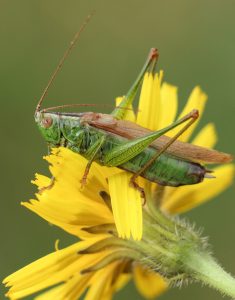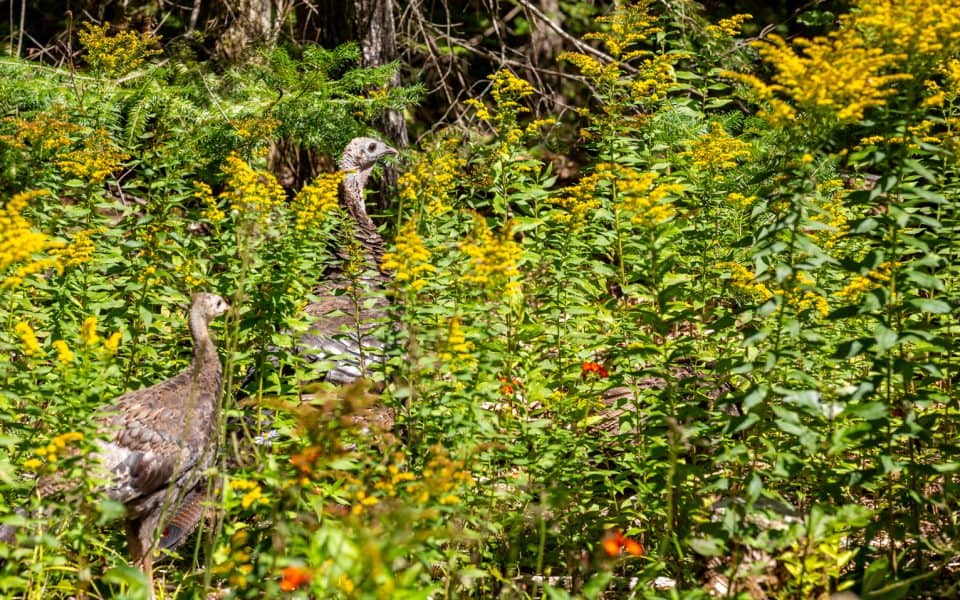At the mention of the words “food plot” one can’t help but envision fields of clover, deep-green brassicas, and tall stands of corn or soybeans. While the goal of a food plot may be to enhance feeding options for local wildlife and to help you seal the deal on a buck of a lifetime, some wildflower plots can also add to the aesthetics of your property, attract pollinators, in addition to providing much needed cover and bugging opportunities for turkey poults as they develop.
What makes a wildflower plot a viable option for your property? Soil should never be overused, or unused for that matter. Devoting a portion of your plot areas to wildflower plots can diversify your area to provide cover for vulnerable wildlife while protecting and strengthening the soil. Wildflower plots can also be quite small, yet still be effective. When strategically placed, they can create cover and a bugging haven. Once the wildflowers begin to bloom, you are also providing food for pollinators, which will benefit your other food plots and native plants that require pollination.
Most wildflower seed mixes include both perennial and annual seeds to help your plot have a lasting effect on your wildlife. The perennial varieties may not bloom their first year as their root systems develop, but will instead bloom the second year and years thereafter. Annual varieties will bloom the first year, producing seeds, which will ensure their survival for following seasons. Contact your state’s department of wildlife for recommendations.

Jarrod Stephens
Wildflower Site Selection and Site Prep
Site selection for wildflower plots should complement the variety of plant/seed that are chosen. Wildflower seed mixtures typically require full to partial sun, however, some varieties will do well in shady areas. Areas with at least six hours of direct sunlight and those that drain well are typically best suited. A little homework will help you find wildflower seeds that are suitable for your soil type and region.
Plots will be most effective wherever you can find nutrient-rich soil. Unused fields, along with plot edges and hard to access corners can be used for wildflower plots. Many wildflowers make for a great cover crop or rotation crop between major food plot plantings. Having wildflower plots adjacent to legume plots will provide a quick getaway for turkeys whenever they feel threatened in the open spaces.
Much like any food plot, site preparation is key to having a flourishing wildflower plot. Many varieties of wildflowers develop slowly, so removing debris and existing competition is imperative. For larger plots, the use of a glyphosate herbicide to eradicate hardy plants such as fescue will help to get the plants off to a great start once germinated.
Seedbeds for wildflower plots should be prepared in much the same way like other plots where small seeds will be planted. The seeds should be broadcasted evenly onto a well-prepared firm seedbed. Good seed to soil contact will expedite the germination process. Pressing the seed firmly into the soil with a cultipacker is best, but a light drag of a treetop or chain-link fence over the area can provide ample coverage. Depending on your weather, the germination process can take 10-14 days before the seedlings will emerge. Timing for planting your wildflower plot will depend completely on your region. Planting should occur after the threat for killing frost has passed.
Native Warm Season Grasses
 Historically, wildflowers coexisted with what has become known as Native Warm Season Grasses (NWSG). Adding a mixture of up to 25% NWSG seeds with your wildflower seeds can add another dimension to the plot’s effectiveness. The larger stems and the fact that NWSGs grow in bunches, creates open areas at ground level which makes navigating through the wildflower plot easier for turkey poults. Insects will thrive in the understory, as will the poults. The cover and bugging opportunities won’t only be enjoyed by the poults. Such plots will become a favorite hangout for turkeys of all ages.
Historically, wildflowers coexisted with what has become known as Native Warm Season Grasses (NWSG). Adding a mixture of up to 25% NWSG seeds with your wildflower seeds can add another dimension to the plot’s effectiveness. The larger stems and the fact that NWSGs grow in bunches, creates open areas at ground level which makes navigating through the wildflower plot easier for turkey poults. Insects will thrive in the understory, as will the poults. The cover and bugging opportunities won’t only be enjoyed by the poults. Such plots will become a favorite hangout for turkeys of all ages.
Wild Turkey Bugging Habitat
During the growing season, hens and poults will find cover in the plot and find bugs, which are essential for early poult survival. After hatching, poults are vulnerable to predators whenever they are in clearings, which makes tall wildflower plots a perfect addition to your land. For the first several weeks of a poult’s life their diet will consist of about 80 percent animal matter. The high-protein bugs are important for early feather and muscle development. An increase of bugs surges poult survival rates dramatically. Since wildflower plots have a long growing and maturation season, the cover and bugging will last well into the early fall. Even long after the growing season ends, the woody stubble will continue to provide sanctuary until mowed or burned.

Sandra Standbridge
Wildflower plots will reach heights of up to four feet and the density of the plants creates a haven for nesting hens and poults. Turkeys are not the only wildlife that will benefit from the cover created by the wildflowers. Fawns, rabbits, and other game birds will find sanctuary within the plot.
Wildflower Plot Maintenance
After a wildflower plot is well established, it is quite self-sufficient and requires minimal maintenance. Fertilization is not required during the first year so that competing vegetation doesn’t have the chance to flourish. In subsequent years, after the plot is well-established, light fertilization can improve the overall health of the plot, while not being as big of a concern for feeding competing vegetation. Wildflower plots can be sustained by the implementation of mowing and controlled burning. Simply due to their slow development, wildflower plots may need occasional mowing during the early part of the growing season to slow the growth of competing plants. Mow just above the height of the wildflower plants to allow plenty of sunshine to reach the plot.
After a season of growth, the wildflowers will have developed strong root systems, which will perpetuate the perennial plants during the following seasons. The woody material and stems can become dense and matted at ground level and can safely be removed with a controlled burn. Burning should only be done when conditions are safe and after the first killing frost in your area. If you live in a region where frost is unlikely, then you will need to postpone the burn until the wildflowers have died, and the stems have dried.

Mircea Costina
It can take from two to four years for a wildflower plot to reach its full potential, so don’t be discouraged by what seems to be less than stellar results during the first year. In spite of their slow development, the long-term rewards are great when you consider that the plot is nearly self-sustaining and provides both cover and food for your turkeys and other wildlife. The increased number of pollinators in the wildflower plot will have a positive effect on your legume, grain and fruit crops as well. A wildflower plot on your land is certainly an investment into the future of your turkey population considering that good cover and bugging habitat are both essential to poult survival.








